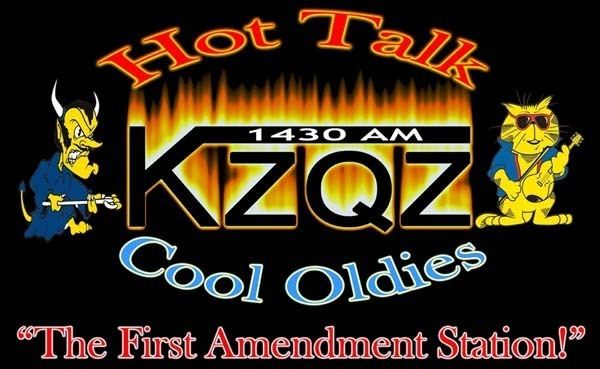Broadcast area Greater St. Louis Class B Frequency 1430 kHz AM Format Oldies, Talk radio | First air date 1922 (as WIL) Facility ID 72391 City of license St. Louis Slogan Cool Oldies | |
 | ||
Power 50,000 watts day
5,000 watts night Former callsigns WIL (1922–1989; 2005–2008)
WRTH (1989–2005) Owner Insane Broadcasting Company Area St. Louis MO-IL, Metropolitan Statistical Area Branding The First Amendment Station/The All American Station 1430 AM KZQZ | ||
Medium wave dx kzqz 1430 khz st louis missouri
KZQZ (1430 AM) is a radio station in St. Louis, Missouri.
Contents
KZQZ's transmitter is located in Dupo.
History
WIL started broadcasting in 1922, and has had various formats during its tenure. From 1989 until 2005, the station was known as WRTH.
An ad in a 1933 issue of Broadcasting magazine listed a number of "firsts" for WIL, including the following:
In the 1930s, WIL termed itself "The biggest little station in the nation."
WIL was the first station in St. Louis to air a popular music format beginning in the 1950s, and was an early career stop in the late 1950s and early 1960s for personalities who later achieved success in New York City radio including WABC's Dan Ingram and Ron Lundy. It eventually succumbed to competition from Storz Broadcasting's KXOK AM, moving through various formats in the 1960s, before finally landing at country music, where it became the top country music outlet in town, featuring personalities such as Davey Lee.
In the mid-1970s, facing competition from startup country station WGNU-FM in Granite City, Illinois at 106.5; WIL began to simulcast with their sister station at 92.3 FM. By the early 1980s, WIL-FM was affirmed as the top country-music station in town, and 1430 AM was split off from their FM sister station to start a classic country format, which it kept until 1989 when the station switched to an adult standards format with the call letters WRTH, which were on the air with the same format for many years at 590 AM in Wood River, Illinois (now KFNS AM).
1430 AM went through the 1990s as WRTH, and into the 2000s. Facing the aging demographics of the nostalgia format, the station moved to a short-lived 50s/60s oldies station dubbed "Real Oldies 1430" from July 2003 through mid-October 2004. Following a fifteen month run with Oldies, the station briefly returned to its adult standards format in late-October 2004, only to come full-circle, and return to classic country and its original call sign in late-2005.
Beginning in Fall 2006, the station began serving as the St. Louis affiliate of the Missouri State University Basketball Network, airing the live feed of men's basketball games which originates out of KTXR Radio in Springfield, Missouri.
On Thursday, March 6, 2008, Country Legends 1430, WIL, was replaced by the current KZQZ, airing a combination of talk and oldies, branded jointly as "The First Amendment Station/The All-American Station, Hot Talk, Cool Oldies, 1430 AM KZQZ". (1) The classic country format continues on sister station 1190 KQQZ in De Soto, Missouri.
Facilities
The station normally operates a directional array both day and night. It operates a 50,000 watt signal daytime, 5,000 watt nighttime, phased among two towers in the daytime, and differently among four at night. The antenna site is located between Dupo and Cahokia in Illinois.
In 2006, very severe thunderstorms on July 20 knocked down one radio tower of WIL, and two more at KTRS AM 550 (which transmits from a different location). Both need the extra towers, which are mast radiators, to create the proper nulls to prevent RF interference to other stations. Under special temporary authority, they were forced to operate non-directional with reduced power until new towers could be erected. [1] The same storms left hundreds of thousands without electricity, and knocked KSLG AM 1380 off the air as well.
